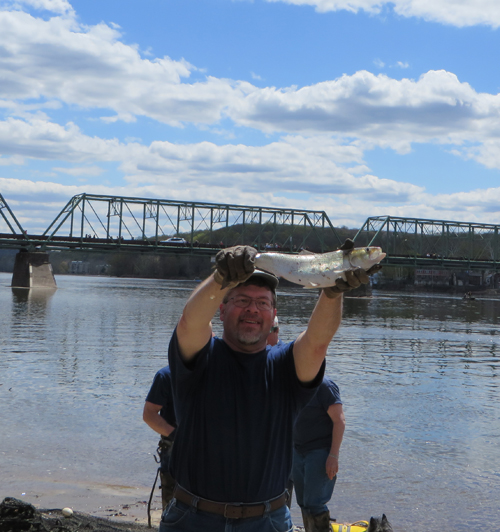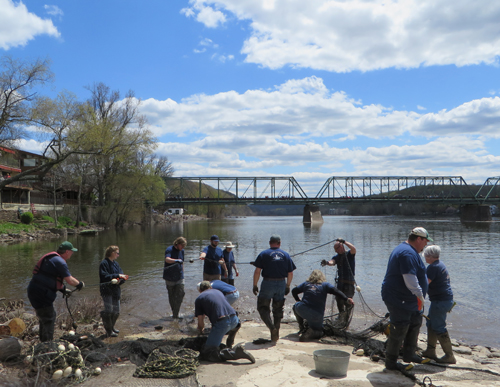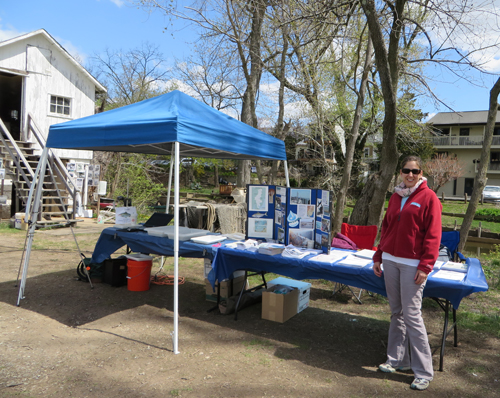Delaware • New Jersey • Pennsylvania
New York • United States of America
Several of the Delaware River’s migratory fish species have returned to the river to spawn, or lay their eggs. It’s a tell-tale sign that spring is truly upon us!
The American shad have started their annual run up the Delaware River to spawn. A member of the herring family, American shad are anadromous fish, meaning they are born in fresh water, live for several years as adults in the ocean, and return to their natal waters to spawn. View 2016 Delaware River Shad Fishing Reports on the N.J. Division of Fish and Wildlife web site.
The Delaware River is an important waterway for American shad, and their presence is indicative of the water quality improvements that have occurred over time. Additionally, the fact that there are no dams on the mainstem Delaware greatly increases their success at traveling upriver to spawn.
The 35th Lambertville Shad Festival will take place on Saturday, April 30 and Sunday, May 1, 2016 in Lambertville, N.J. This annual festival celebrates the region's arts community, the Delaware River, and of course, the annual return of the American shad. DRBC will again be exhibiting on Lewis Island on both days of the Shad Festival; we hope to see you there!
The Shortnose sturgeon have also begun their annual spawning run in the lower Delaware River. Like American shad, Shortnose sturgeon are anadromous fish. It is encouraging that the Shortnose sturgeon have been spotted again this year in the river, as they are an endangered species.
For additional information on the Shortnose sturgeon, please visit the NOAA National Marine Fisheries Service web page.
The below video was taken by DRBC staff on March 30, 2016.
Copyright © Delaware River Basin Commission,
P.O. Box 7360, West Trenton, NJ 08628-0360
Phone (609)883-9500; Fax (609)883-9522
Thanks to NJ for hosting the DRBC website



